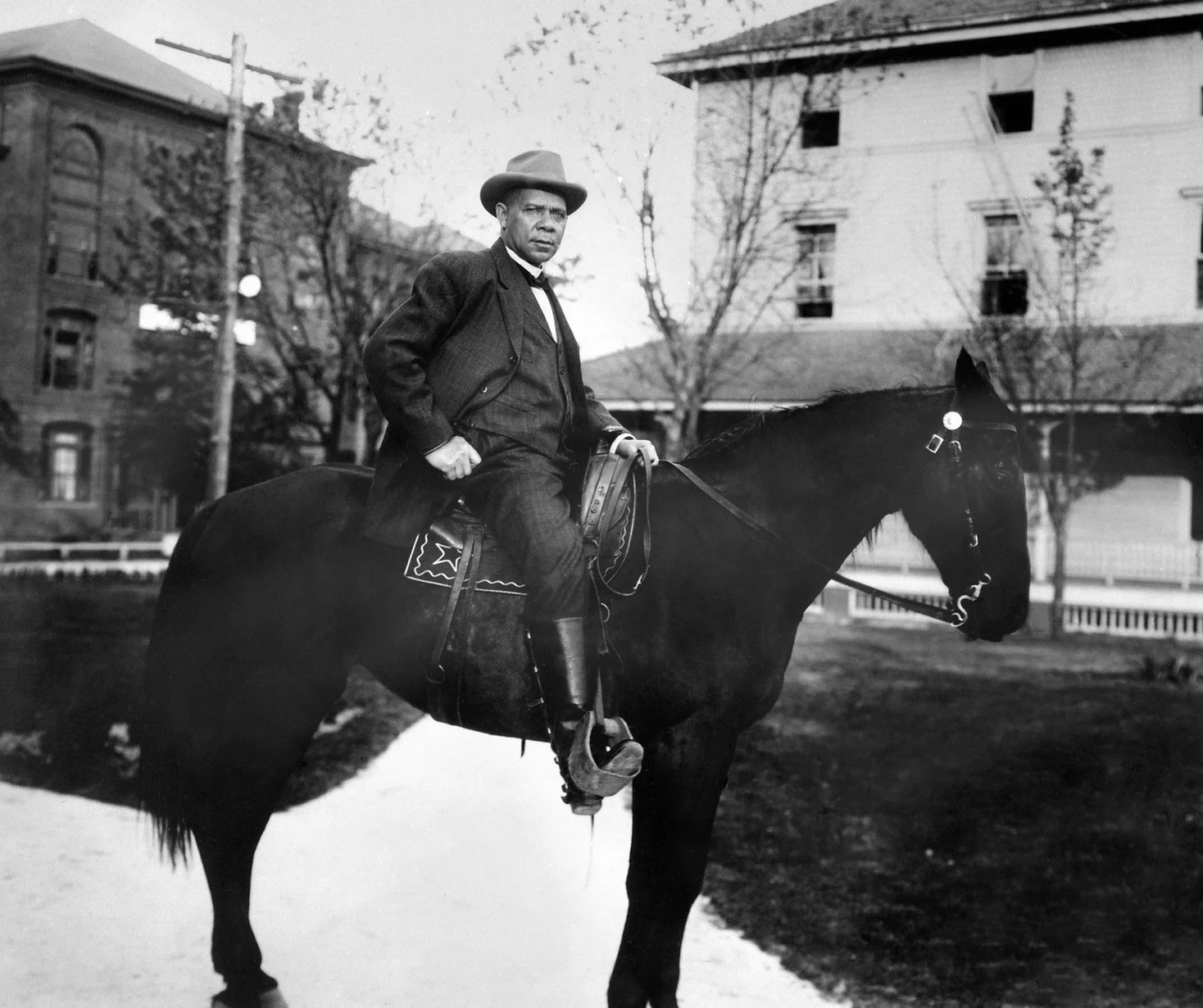Photo by Bettmann Collection/Getty Images
In his speech at the 1895 Atlanta Cotton States Exposition, Booker T. Washington presented the metaphor of Black and white Americans being “as separate as the fingers, yet one as the hand in all things essential to mutual progress.”
Critics considered his speech problematic because it did not directly challenge the existing inequalities in voting rights and governmental representation. Others interpreted his notion of interracial solidarity as a prudent navigation of the white supremacist environment in which he lived.
In relation to his work at the Tuskegee Normal and Industrial Institute, which he helped to establish, these doubts about Washington and his ideas continued to persist because of his relationships with the white American philanthropists of the day, many of whom provided significant funding for the Institute.
Washington’s speeches and writings have been the primary tool critics use to evaluate him and his mission. However, to see things as Washington saw them it is important to also analyze the photographs that document his life and work—including the four here that document the 25th anniversary commemoration of the Tuskegee Institute—because these images can offer additional insight into how he represented himself and his mission.

On January 23, 1906, Washington held a fundraising event at Carnegie Hall in New York City, pictured here, where he gave his Tuskegee Institute Silver Anniversary lecture (seated behind Washington was Mark Twain).
In his speech, Washington asked the audience to board a private railcar that he’d scheduled for a roundtrip journey from New York City to Tuskegee, Alabama. The purpose was to create an opportunity for potential donors to visit the Tuskegee Institute during the ceremonies in celebration of its 25th anniversary. More than one hundred philanthropists accepted his invitation.
The celebration, also known as the “Silver Jubilee,” ran from April 1 to 6, 1906. There were parades, exhibitions, marching bands, student orchestras, campus tours, and parties. Washington hired the famous photographer Frances Benjamin Johnston to document the many memorable sights of the occasion.
Guest speakers at the anniversary ceremonies included William H. Taft (left of Washington in the photograph below), then U.S. Secretary of War and soon to be President of the United States. This was the first time the industrialist Andrew Carnegie (right) visited the Tuskegee campus. He came to give a speech and to see in person the Carnegie Library, the building shown behind them.

The library was designed by Robert Robinson Taylor, the first African American to hold a degree in architecture. Tuskegee students made the bricks and did the bricklaying and other crafts involved in construction of the building.
Washington’s success as a fundraiser resulted, in part, from his making visible the capacity of African Americans to do great things. The Carnegie Library, which opened in 1901, wasn’t their only construction project. The faculty and students of Tuskegee built the majority of the campus’s buildings, roads, and utilities systems.
The photograph below (likely taken April 4), shows a crowd of approximately 2,500 people gathered at the Tuskegee Chapel. Of note in this image is the banner suspended above the stage, which is the back side of an electric sign. There are two wires coming from the upper right to the center of the sign. These are likely the wires delivering electricity.

From the audience’s point of view, the sign when lighted spelled “1881 – 1906.” In its first year, the Tuskegee Institute was a one-room shanty that fit only thirty students. Twenty-five years later, the school occupied 2,300 acres of land and had approximately 6,000 alumni. Celebrating this growth and gaining financial support for its continuation was the purpose of these elaborate ceremonies.
During the early twentieth century, it was rare to encounter electrical signage in rural Alabama. This was likely made by Tuskegee faculty and students, because in 1898 Washington hired Arthur Ulysses Craig to lead Tuskegee’s electrical engineering department. A decade earlier, Craig had become the first African American with a college degree in electrical engineering.
His largest project at Tuskegee was the installation and operation of a dynamo electricity generator, which caused the Chapel to become the first building in Macon County to have internal electrical lighting. The generator also powered other campus buildings and outdoor lamp posts on and off-campus and served as an electrical utilities provider to the nearby town of South Greenwood, making this region of Alabama more technologically advanced than its categorization as rural would imply.

The scenes in which Washington was photographed were often of his own creation. In Johnston’s photo of him atop his horse, Dexter, every item in the scene had been constructed there by Washington over the course of twenty-five years, including the photographer who took the picture.
Across all these photos, the buildings in the background, the utility poles rising into the sky, the people and things standing with him, and even the paved roads on which he stands serve as silent evidence of what he and the Tuskegee Institute were able to achieve despite the dangers and criticism imposed on African Americans during that era.

Listen to the author:
Learn More:
Woodson, Carter G. “Honor to Booker T. Washington.” Negro History Bulletin vol. 10, no. 6 (1947): 123–143.
Washington, Booker T., and Robert E. Park. The Man Farthest Down: A Record of Observation and Study in Europe. Garden City, New York: Doubleday, Page and Company, 1912.
Bieze, Michael Scott and Marybeth Gasman. Booker T. Washington Reconsidered. Baltimore: Johns Hopkins University Press, 2012.





